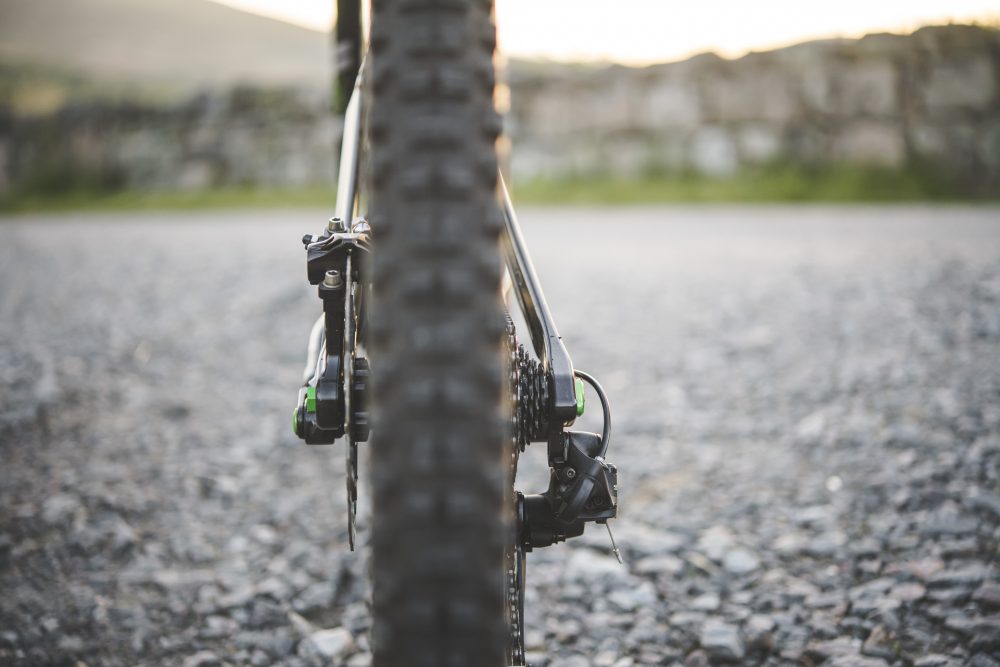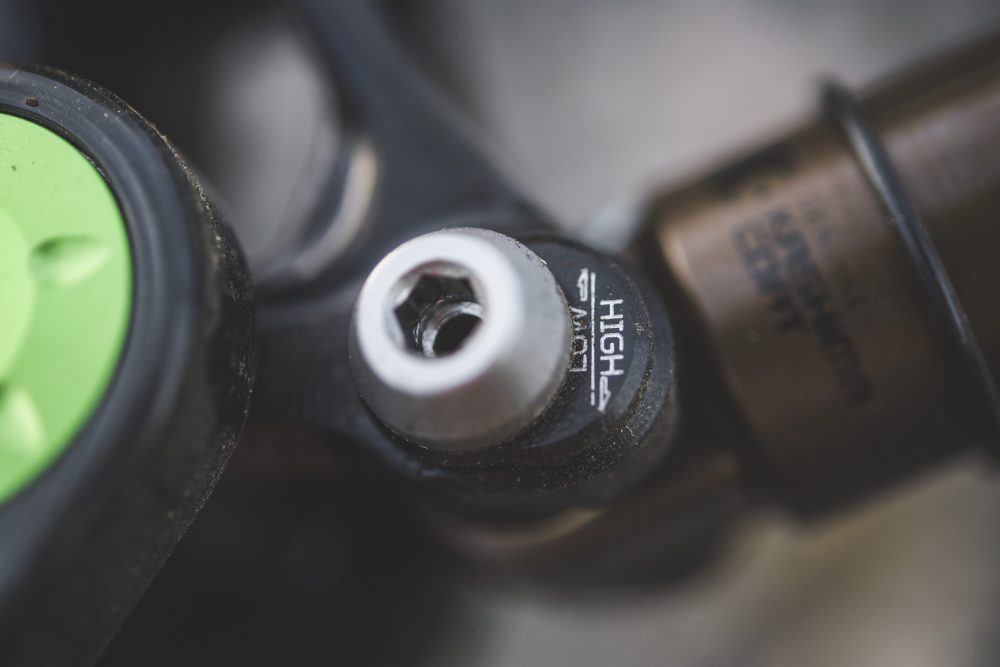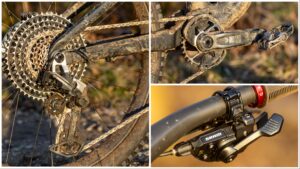Hope launched its first complete mountain bike, the HB160, to a lukewarm reception. Now it's back with a brand new 29er trail bike - does the Hope HB130 pack some proper lead in its pencil?
Hope HB130: first ride on Hope’s trail bike 29er
Hope launched its first complete mountain bike, the HB160, to a lukewarm reception. Now it’s back with a brand new 29er trail bike – does the Hope HB130 pack some proper lead in its pencil?
>>> First ride on the Hope HB160 carbon enduro bike
Hope HB130 need to know
- 29er trail bike with 130mm travel
- Handbuilt in carbon and aluminium in Barnoldswick, Lancashire
- Extensive colour options for all anodised components
- Frame only option for £3,950
When Hope launched its first complete bike – the HB160 – it was hard to stop emotion and sentimentality from influencing objective judgement. Here was a British company, that had pursued its dreams, and risen to the considerable challenge of learning how to make a modern, carbon full-suspension bike completely in-house. There was tragedy – co-owner Simon Sharp passed away before he could see his bike go on sale – but there was also an warm, fuzzy feeling of pride and achievement that infected all that came into contact with the project.

Precision laid 1k carbon weave helps the HB130 remain honest to its materials and manufacturing
The bike itself was good, but not great. It was overly conservative in shape and construction, with sizing and geometry that was a step behind the latest releases and an indestructible build that meant the ride didn’t sparkle to the same degree as the anodised components. Being a first born meant this was all perfectly sensible – it would have been foolish to push the boundaries, only to go too far. After all, you only get one chance at a first impression.
With the introduction of its second model, there is no room for romanticism. This new bike has to perform in a highly competitive market full of dream bikes, and it has to attract a customer buying it for more than just where, and by whom, it’s made.

Every frame pays tribute to the late Simon Sharp – the man for whom creating this bike was a long held goal
With 29in wheels and 130mm of travel, the HB130 certainly has its sights set on a wider market. Gone are some of the more bespoke parts (such as the radial brake mounts and sleeved bottom bracket), which, along with the option of a frame kit means it becomes more attractive to those customers looking to upgrade on a smaller budget.

The top tube, where the two halves of the clam meet is a work of art
It still looks and feels very much like a Hope bike, though. The exposed 1k weave is as quintessentially English as herringbone tweed on a tailored suit, with beautiful seams where the two halves of the clam meet along the spine of the top tube. Where other carbon frames hide behind filler, thick coats of paint and deep lacquer, the Hope bike showcases the beauty of carbon weave and the skill of the lay-up technician. There is no room for error, but this pursuit of perfection, without resorting to corner cutting, results in more care and precision during the production process. And while carbon production may not be without impact on the environment, in Hope’s case there is certainly a fraction of the shipping emissions compared to Far Eastern products.

Increasing the reach has made the HB130 a much more modern proposition
The back end celebrates the other side of the business: aluminium machining. Every single part, bar the extruded alloy seatstays, is machined in house. And even the seatstays are now bonded to the intricate dropouts and upper yoke within the four walls of the Hope factory.

Machined stays are bonded or bolted together – this is a bike of two halves
After two years and, according to Hope, zero front-end frame failures for the HB160, it had the confidence to be a little more adventurous with the HB130. As such, the geometry and sizing changed three times during the development process, and the numbers that were eventually signed off are much more in line with current trends. For the three sizes on offer, the reach ranges from 455mm to 495mm, the head angle (adjustable by 0.5°) rests at 66°, and the reconfigured front triangle has space for a water bottle cage. Our only real criticism of the HB130 sizing is that the seat tubes are still overly long considering the proliferation of longer dropper posts on the market. Chopping 20mm off the seat tubes would give riders more flexibility when it comes to choosing frame sizes, as well as more room to move on technical terrain.

Extruded stays are bonded to CNC dropouts
The carbon front triangle is also 100g lighter than the HB160, partly because of the new bike’s intended use, and partly because Hope knows the early frames were overbuilt. At the back the narrow rear dropouts remain. A custom 130mm hub is bolted between the dropouts by a 17mm diameter axle that runs directly on the bearings. The symmetrical spoke bracing angle keeps forces even and helps stiffen the wheel while keeping the back end slender. There are acres of heel clearance and you’re much less likely to graze a rotor or derailleur through rock gardens as a result.

Skinny back end thanks to 130mm hub and 17mm thru-axle

The HB130 is far more capable than the numbers suggest
How it rides
After the slightly disappointing ride of the HB160, can the new HB130 hold its head up high and compete with the best trail bikes currently on the market? After a couple of days aboard the new bike on the thoroughly Scottish trails in and around Ballater, in the Cairngorms, I’d say yes, it can.
>>> Ballater route FREE GPS download: Head to the Queen’s backyard for some royally good trails
This is a much more coherent product than the HB160, which always felt a bit like a trail bike on steroids rather than a full-blown enduro bike. The HB130 gives the opposite impression – a trail bike that can be ridden at enduro bike pace. It’s also playful and rewarding in a way that eluded the 160.

Big slabs of fun are to be had thanks to the playful handling and active suspension
My size large test bike felt bob on in terms of sizing. Middle of the road safe, certainly, but long enough to be comfortable and capable at slow, medium and high speeds. Trim the seat tube a touch and it would be even better.

Set flip chips to FUN
With the flip chip in the slack/low setting the BB height helped promote that sense of stability and let me really drive the wheels into turns for grip – something that the 160 lacked. Yes, pedal strikes were more frequent as a result, but it’s a trade-off I’m happy to make.

The low BB really lets you commit to the turns
As with the HB160, Hope has done a great job with the suspension. Considering the shock uses bushings, rather than bearings, at both ends, there’s excellent sensitivity and grip. This active nature does mean it bobs a bit more than some trail bikes out of the saddle, but this generates excellent grip on the climbs and the compression switch is within easy reach if you do want to stabilise the back end.
On bigger drops and compressions we’d prefer a bit more progression, but this is simple to do with the installation of a larger volume spacer in the shock.

There’s good grip on the climbs, but it’s worth using the compression switch on smoother ascents
The narrow back end also helps when it comes to threading through stumps and rock gardens – something that we experienced a couple of times on the Cairngorms’s unforgiving granite trails.
There is some rear end flex present. On the numerous rock gardens around Ballater this was mostly a help, as the back wheel tended to find the path of least resistance, but we also felt it a few times when railing turns and torqueing on the handlebars up stepped climbs. It wasn’t something we felt detracted from the ride, more a trait to be aware of.
Verdict
The new Hope HB130 may be more mainstream in terms of geometry and sizing, but it hasn't lost any of the distinctive features that makes it stand out from the crowd. By taking everything it learned during the creation of the HB160, Hope's new trail bike rides as good as it looks. With the chance to customise your dream build with whatever colour takes your fancy, and pick it up from the very place it came to life, Hope is offering a truly unique experience to prospective customers.















